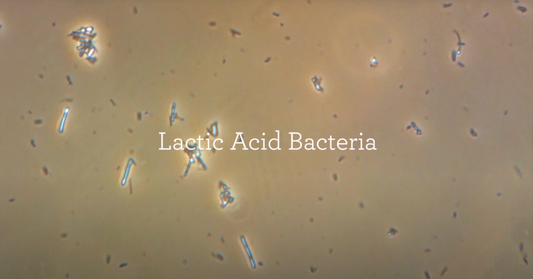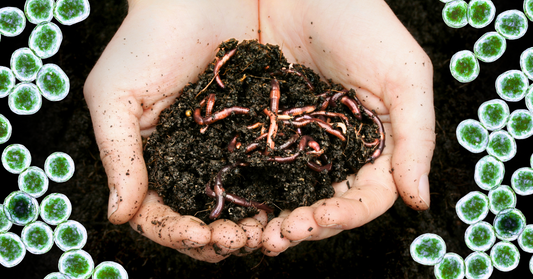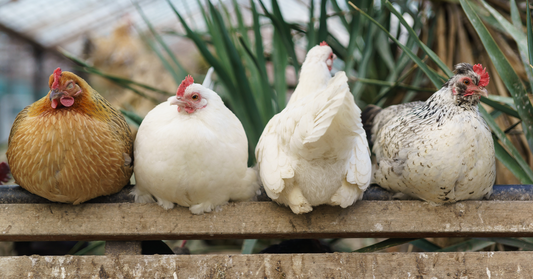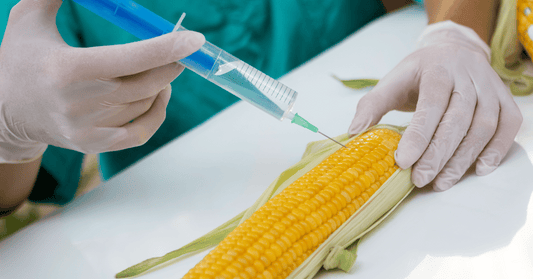
Genetic Engineering in Agriculture: Risks and Alternatives with EM-1
Genetic modification and engineering have revolutionized agriculture, promising increased yields and disease resistance. However, concerns about their environmental and health risks have sparked a search for safer, more sustainable alternatives. In this blog, we will explore the dangers of genetic modification in agriculture, especially concerning products and microbes, and introduce EM-1 as a regenerative, organic alternative that can address these concerns.
I. Genetic Engineering in Agriculture: The Risks
-
Environmental Impact:
- Genetically modified organisms (GMOs) can escape into the wild, potentially disrupting natural ecosystems and biodiversity.
-
Pesticide Dependence:
- GMOs engineered for pest resistance can lead to the overuse of chemical pesticides, harming non-target species and contaminating soil and water.
-
Loss of Genetic Diversity:
- Extensive adoption of genetically engineered crops may reduce crop diversity, making our food system more vulnerable to pests and diseases.
-
Unknown Long-Term Effects:
- The long-term health and environmental impacts of GMOs remain inadequately understood, raising concerns about unintended consequences.
-
Microbial Genetic Engineering:
- Genetically modified microbes can pose risks when released into the environment, as their behavior and impact can be unpredictable.
II. Genetic Modification of Microbes in Agriculture
-
Bioengineered Microbes:
- Scientists are developing genetically modified microbes for various agricultural applications, such as nitrogen fixation, pest control, and nutrient cycling.
-
Environmental Concerns:
- Engineered microbes could potentially disrupt native microbial communities and ecosystems when released into the environment.
-
Gene Transfer:
- There is a risk of genes from modified microbes being transferred to native microbes, potentially creating unforeseen ecological consequences.
III. EM-1: A Regenerative and Organic Alternative
EM-1, or Effective Microorganisms-1, offers a compelling alternative to genetic modification in agriculture, addressing many of the concerns associated with GMOs:
-
Biodiversity Enhancement:
- EM-1 promotes the growth of beneficial microorganisms in the soil, enhancing biodiversity and creating a healthier ecosystem.
-
Reduced Chemical Dependency:
- EM-1 improves soil health and nutrient availability, reducing the need for chemical fertilizers and pesticides.
-
Natural Pest Control:
- EM-1 can suppress harmful pathogens and pests naturally, reducing the reliance on genetically engineered pest-resistant crops.
-
Enhanced Soil Structure:
- EM-1's microbial activity improves soil structure, preventing erosion and enhancing water retention.
-
100% Organic Microbial Inoculant:
- Unlike modified microbes, EM-1 consists of naturally occurring beneficial microorganisms that are already part of the soil microbiome.
IV. EM-1 in Action: Real-World Success Stories
Let's explore some real-world examples of how EM-1 is transforming agriculture while avoiding the risks associated with genetic modification:
-
Soil Restoration:
- EM-1 has helped farmers restore degraded soils, increase yields, and improve the overall health of their land.
-
Chemical Reduction:
- Farmers using EM-1 have significantly reduced their reliance on synthetic fertilizers and pesticides.
-
Diverse Crops:
- EM-1 has enabled the cultivation of a wide variety of crops, contributing to healthier and more resilient farming systems.
V. Conclusion
Genetic engineering in agriculture, particularly the modification of products and microbes, raises valid concerns about its environmental and health impacts. EM-1 offers an alternative that promotes regenerative and organic farming practices, addressing these concerns while nourishing our soils, improving crop yields, and safeguarding our planet.
By embracing EM-1 and similar microbial solutions, we can move away from the uncertainties and hazards associated with genetic modification, while fostering a more sustainable and resilient agricultural future. It's time to prioritize safe, organic, and regenerative practices in agriculture, ensuring the well-being of our environment and generations to come.







